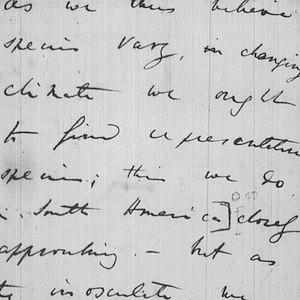-
-
Step-by-step course guide
-
What you will learn in this course
-
About the course: David Kinney & Simon DeDeo
-
Introducing the course Teaching Assistant
-
Join the discussion
-
-
-
Introduction to Humanities Analytics
-
-
-
-
Analyzing "Excellence" in the Humanities
-
-
-
-
-
-
Case Study: Capitalism & Democracy
-
Chapter 5 part 1 Overview
-
The Marriage of Capitalism & Democracy part 1
-
Test Your Knowledge part 1
-
Test Your Knowledge part 1: Explanations
-
Chapter 5 part 2 Overview
-
The Marriage of Capitalism & Democracy part 2
-
Test Your Knowledge part 2
-
Test Your Knowledge part 2: Explanations
-
Assignment: Case Study: Capitalism & Democracy
-
-
-
-
-
Measurement & Operationalization
-
-
-
A Philosophical Approach to Probability
-
-
-
Guest Lecture: Marco Buongiorno Nardelli
-
-
-
-
-
Guest Lecture: Nan Z. Da
-
-
-
Wrap-Up
-
What's Next
-
12.1 Guest Lecture: Marco Buongiorno Nardelli » Lecture Overview
The goal of this guest lecture
As with all guest lectures, the aim is to inspire you by providing exemplars of Humanities Analytics projects. In this unit, Marco Buongiorno Nardelli demonstrates how some of the concepts that have come up in previous FAHA lectures can be applied to music. You will see classical western music as a network of chords and how the network properties facilitate a comparison of compositional structure. You will see a measure of complexity used to classify the works of different composers. Buongiorno Nardelli compares the collection of all possible chord sequences to the collection of possible orthographical symbol sequences in Borges's Library of Babel. Only some of these sequences "make sense" – in music as in language.
Key terms to keep in mind
Network, node, edge Networks have appeared in the course a few times before, for example, in Lauren Klein's guest lecture. A network is a graphical representation of the connections between data points. The data points are called "nodes", the connections between points are called "edges". In Buongiorno Nardelli's lecture, the nodes are chords in a particular composition, and the edges are the distances in harmonic space between two chords.
The degree of a node is a descriptor of a data point that indicates how many other data points it is connected to, eg. a node that is connected to five other nodes has a degree of five. High-degree nodes are called "hubs".
Modularity is the property of a subset of nodes to be more interconnected with each other than would be expected for random connections, given the network properties. Subsets of nodes that are highly connected form communities. A network composed of communities is said to have high modularity.
Harmony, chord and pitch class set (pcs) Harmony is the perception of individual or superpositions of sounds and can be thought of as the "vertical" aspect of a musical score. One example of harmony is a chord, which is a set of multiple – usually three or more – notes that are heard as if sounding simultaneously. In the lecture, chords are sometimes referenced by their musical set theory notation – a numerical classification – and therefore referred to as "pitch class set", abbreviated "pcs".
Eulerian path In a network, a path that traverses each edge exactly once but allows for multiple visits to individual nodes. This contrasts with a Hamiltonian path, which is a path that visits each node exactly once. See more in the Computation in Complex Systems lecture on paths. A variation on the Hamiltonian path, often referred to as the Traveling Salesman/person or Chinese Postman Problem, is the shortest path that visits each node exactly once – and returns to the point of origin.
Entropy (as information) Entropy generally refers to disorder, and in information theory, this disorder or surprise or uncertainty – difference from what is expected/probable – is considered as information. This application of "entropy" was proposed by the mathematician Claude Shannon, and thus is also referred to as "Shannon entropy". In music, if a composition is predictable, ie. repeats the same notes/chords over and over, it has very low entropy, and by extension, low complexity. If a composition is unpredictable, ie. uses a large set of notes/chords that are not repeated, it has high entropy, and by extension, high complexity.
